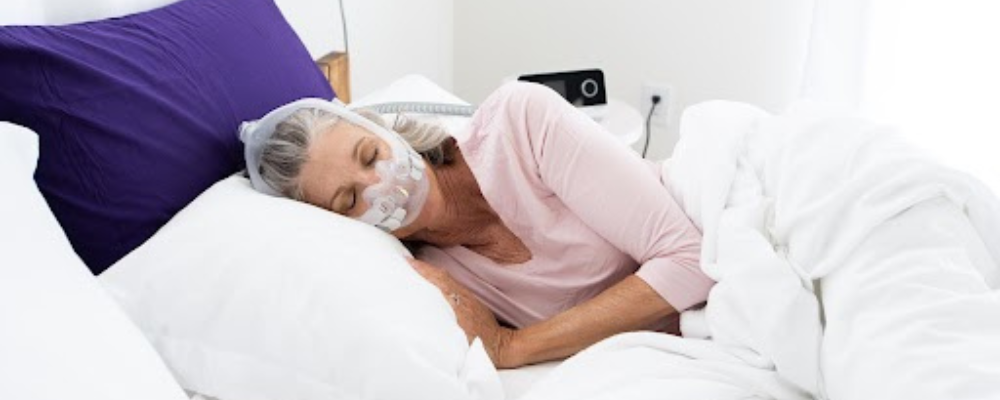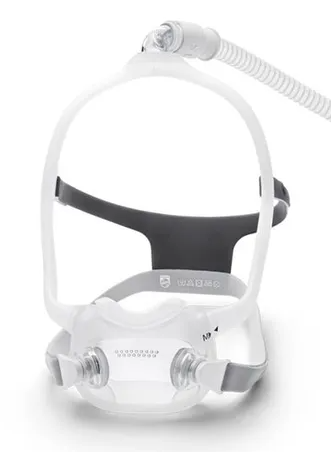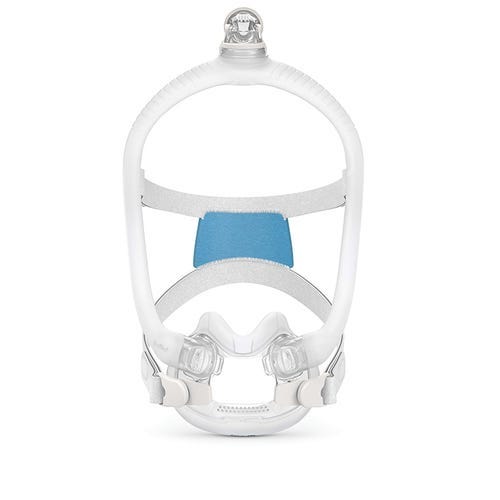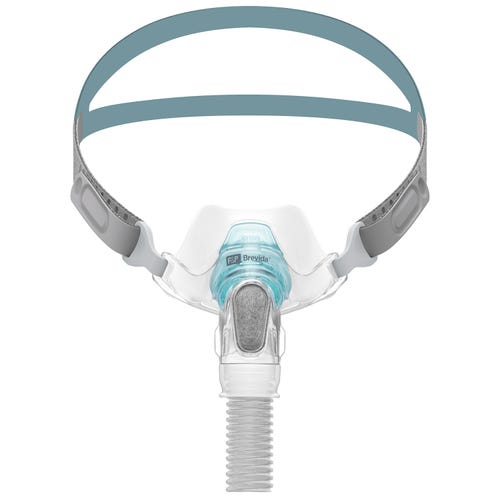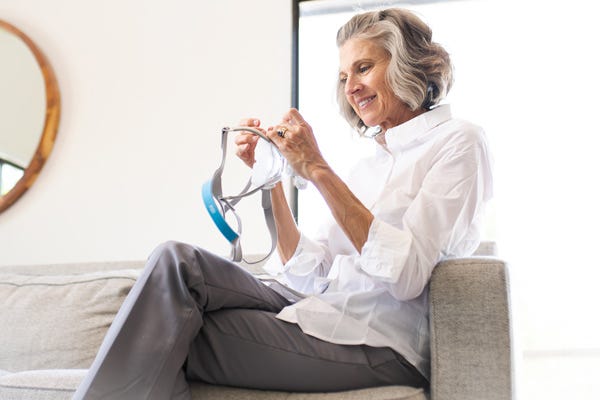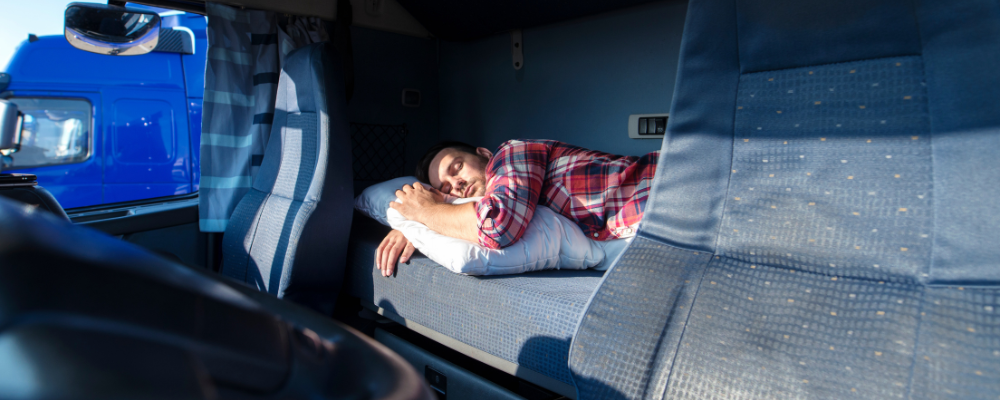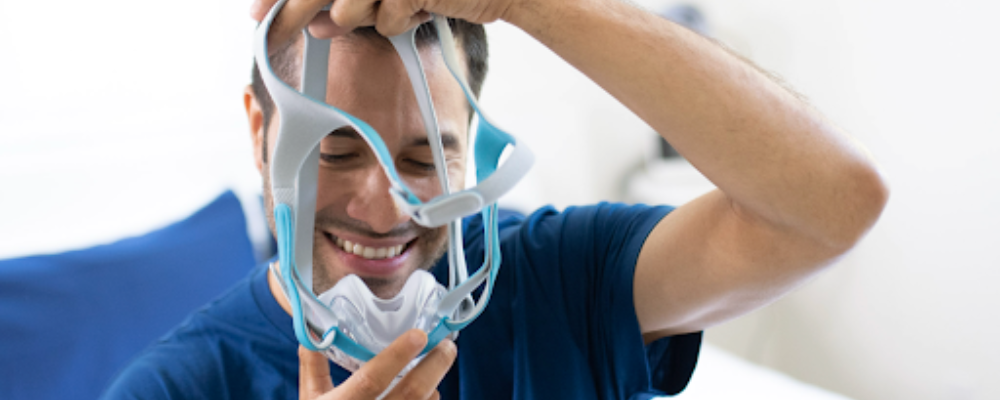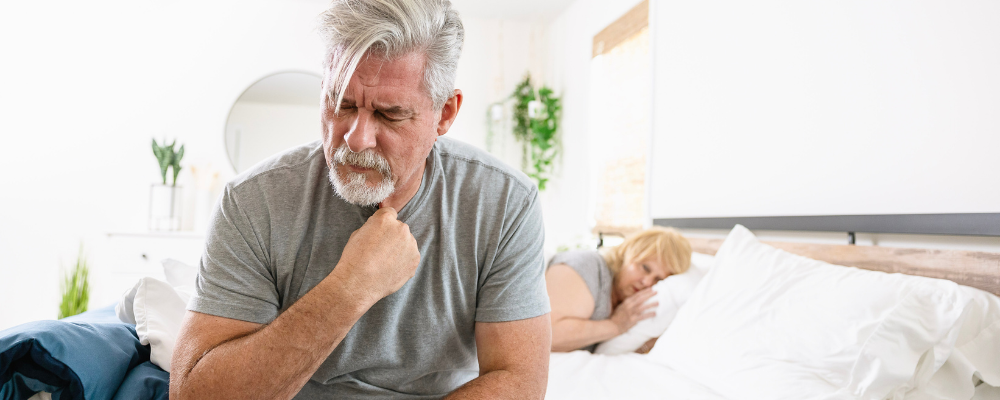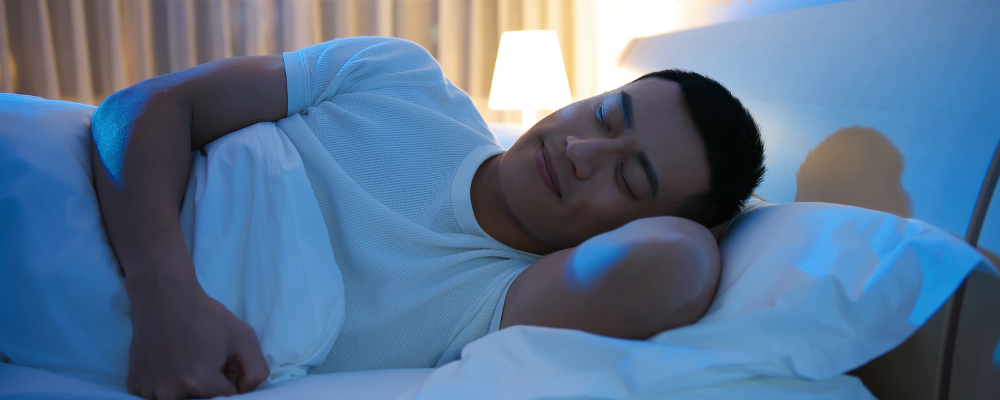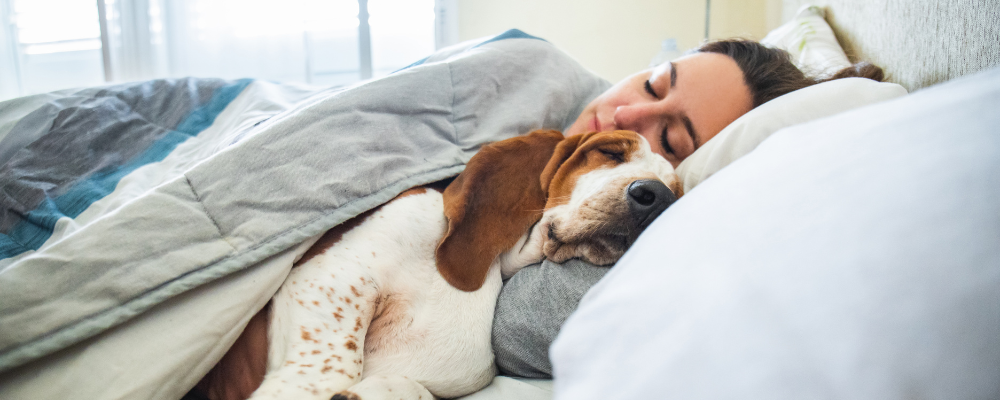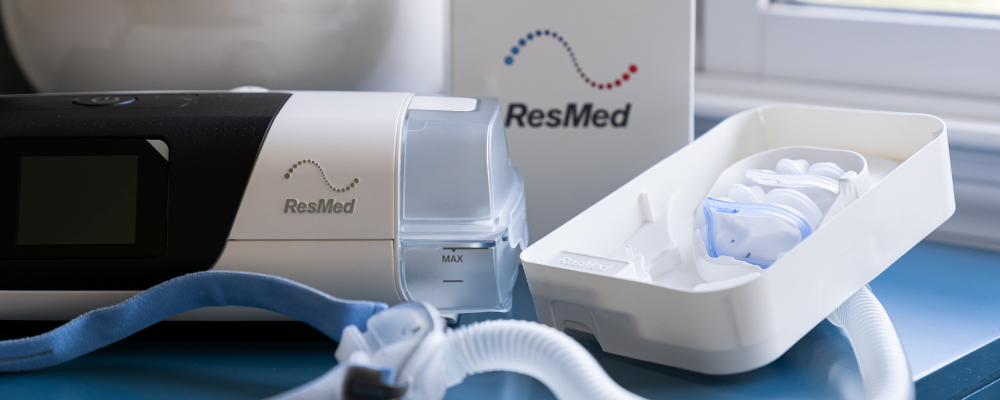Are you a side sleeper, stomach sleeper, or back sleeper? People feel attached to their preference, but the great debate on sleep position has become increasingly clear from a health perspective as the research rolls in. Stomach and back sleeping could be making an already exhausting situation worse, especially for those with obstructive sleep apnea (OSA).
Aeroflow Sleep understands that sometimes it feels like you’ve already tried every other recommendation. You avoid caffeine, meals, alcohol, and electronics before bed, lower your bedroom temperature at night, practice a consistent bedtime, and so on and so on. But why change your sleep position if the one you’re used to seems to be the only way you can get any sleep at all? Does your sleeping position really matter that much?
Change can be tricky, but it may finally be time to train yourself into a more therapeutic sleep posture. We know it’s a big ask, but the research tells us that making the switch to side sleeping can be an impactful choice. Today, Aeroflow Sleep is here to offer some insight into side sleeper health benefits and ways to make the change easier. By the time you finish reading this article, you’ll have a better understanding of why side sleeping could be the best sleeping position for your health!
In This Article:
Health Benefits Of Side Sleeping Positions
Risks For Back Sleepers And Stomach Sleepers
Not A Side Sleeper? What To Do For A Smoother Transition
The Best CPAP Masks And Supplies For Side Sleepers
Where Side Sleeping Ends And Sleep Apnea Begins
CPAP SUPPLIES THROUGH INSURANCE:
Aeroflow Sleep is in-network with most primary insurance companies and is accreditted by Medicare and Medicaid. Complete our Qualify Through Insurance Form, and we will automatically check to see if your plan covers CPAP supplies; including a machine, mask, and accessories. ***Must have a sleep study to qualify.***
You will also receive the care and attention every sleep apnea patient deserves; one-on-one clinical support in-home or via telehealth, a dedicated Sleep Specialist you can contact during business hours, and a user-friendly online portal with tailored replacement schedule, important updates and notifications, and educational resources.
Let us take the headache out of healthcare. Join the Aeroflow Sleep family today! It only takes 5-7 minutes to get started.
Health Benefits of Side Sleeping Positions
Side Sleeper
-
The fetal position, curled up on your side, is favored by around 40% of people. Ideally, you would want to stretch out a bit more in order to create sufficient room for your lungs and good spinal alignment, but it’s a good place to start if you’re new to side sleeping.
-
The best position for pregnant women is particularly left-side sleeping. This keeps your baby from pressing on your liver and improves sleep quality, even for pregnant OSA patients.
-
Side sleeping eases symptoms of heartburn and acid reflux. Left-side sleeping produces the best outcomes.
-
It’s also good for lower back pain, especially if you use bed pillows as cushioning between your knees.
-
Finally, it reduces snoring and sleep apnea - again, sleeping on that left side will give you the best results.
You probably noticed that left-side sleeping is the most beneficial to your health, but many patients ask, “What if I am uncomfortable on my left side?” If left-side sleep does not feel natural, resting on your right side is still preferable to other positions, and you can always start there before rolling over as you drift off to dreamland.
Are there cons to side sleeping? Sure, but they are minimal by comparison. Cons of side sleeping include the risk of shoulder pain, creases on the face (especially wearing a CPAP mask,) and acne. The benefits still outweigh these risks for most, and all 3 cons can be addressed. Try a firm pillow and mattress to help with shoulder pain, consult a dermatologist for acne, and keep reading to find out about the right CPAP masks for side sleepers.
Risks for Back Sleepers and Stomach Sleepers
Back Sleepers
-
Gravity works against OSA patients in this position, exacerbating the hallmark airway collapse that may be the cause of your obstruction. That’s why back sleeping is the sleep position at the highest risk for obstructive sleep apnea.
-
Elevating the head can help, but many people find this prevents them from falling asleep, even with the best pillows. If you can’t sleep, you may literally be putting yourself in a position where sleep apnea symptoms exist; like excessive daytime fatigue.
-
Being at risk for low back pain is another caveat for some patients, taking them further from a good night’s sleep.
-
Finally, it becomes harder to breathe comfortably while back sleeping as we get older and/or heavier. Investing in support pillows and the best mattresses you can afford will go a long way toward maintaining comfortable sleep, but it won’t save you from OSA like the right sleeping position may.
There are, of course, pros to back sleeping, albeit only a couple. Back sleeping can sometimes help with nasal congestion, especially if you can tolerate head elevation. It may also help relieve some back and neck pain, but the risks outstrip the gains for most. This is especially true for people with sleep apnea!
Stomach Sleepers
-
Stomach sleepers get the least back support, especially if using a soft mattress. A firmer mattress might keep your body from sinking into a concave position, but not everyone finds these comfortable.
-
Neck pain and performance issues can result from having to turn the head one way or another to breathe when sleeping on your stomach. Keeping the mouth and nose clear from the pillows also twists the esophagus and misaligns the cervical spine.
-
Your ribs also have to work against gravity in order to breathe while lying on your stomach. Yes, it keeps the airways clearer than back sleeping would, but your body weight pushes down on your lungs, restricting your breathing.
Honestly, there aren’t really pros to being a stomach sleeper beyond your own personal preference, and OSA patients find it to be the most difficult position to sleep in while wearing a CPAP mask.
Not a Side Sleeper? What To Do for a Smoother Transition
If you’re not already a side sleeper, you can try using body pillows to prop yourself up, preventing you from turning over. One of the best accessories for training yourself to side sleep is called a sleep noodle. You just strap it on like a belt, and the firm pillow at your lower back keeps you from easily rolling around in your sleep.
The Best CPAP Masks and Supplies for Side Sleepers
If you do already sleep on your side, that doesn’t mean there aren’t products that can benefit you too. Those with obstructive sleep apnea shouldn’t underestimate the power of a good pillow; like the right-side sleeper pillow! Made specifically for side sleeping and accommodating a CPAP mask, this is the pillow to support your best wellness habits and CPAP treatment simultaneously.
Speaking of CPAP masks, there are some that excel in the world of side sleeping more than others:
- Dreamwear CPAP Masks are part of a product line by Philips Respironics that covers all 3 CPAP mask types and is great for side sleepers thanks to top-of-head tubing. It’s an innovative, unique design that connects your CPAP hose to the top of a hollow mask frame, so you have full freedom of movement.
- The ResMed AirFit F30i Full-Face CPAP Mask also boasts top-of-head tubing and offers one of the widest surface areas available on the market. This is arguably more comfortable, especially for newly diagnosed sleep apnea patients, because it spreads the air pressure out evenly while maintaining a slim, sleek profile with less headgear.
- Finally, the Fisher & Paykel Brevida Nasal Pillow CPAP Mask doesn’t use top-of-head tubing, but what it does have is the most minimal contact of all mask styles. Its two soft, silicone nasal pillows insert directly into the nostril for the smallest footprint possible, making it perfect for side sleeping CPAP users with beards.
Where Side Sleeping Ends and Sleep Apnea Begins
If you or a loved one doesn’t seem to get the best sleep even while side sleeping, ask your doctor about getting evaluated with a sleep study. They may recommend a positional sleep aid or start you on sleep therapy with a particular CPAP mask. Their goal, and ours, is to help you achieve better sleep and overall health as a result.
Aeroflow Sleep reps can help walk you through the process of obtaining PAP supplies and accessories covered up to 100% through insurance. We also provide advice and support as you navigate set-up. Sign up today, so we can get you a good night’s sleep!

